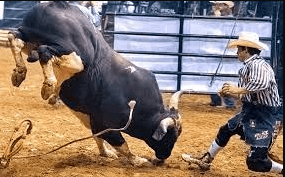Understanding Pickleball Scoring Systems and Match Formats

Pickleball is a well-liked racquet sport that is distinguished by its quick-paced gameplay and captivating competitive spirit. The sport’s dynamic and thrilling nature is enhanced by particular scoring systems and match formats. In order to completely appreciate the subtleties of this quickly developing sport, Pickleball players, coaches, and aficionados must be familiar with the complexities of Pickleball scoring systems, including the rules, point’s structure, and match formats. We explore the many facets of Pickleball scoring schemes and match structures in this extensive book, illuminating the principles, tactics, and essential components that shape the competitive environment and gameplay dynamics of the game.
Exploring Pickleball Scoring Systems
Pickleball is a fast-paced, competitive sport that calls for both talent and strategy due to its distinctive scoring system, which blends elements of table tennis and tennis. To play Pickleball efficiently and maximize their gameplay plans based on the scoring rules and point structures, players must comprehend the nuances of the scoring systems.
The 11-Point Game Scoring System
A team must win by at least two points in order for a match to proceed to 11 points under the conventional Pickleball scoring system. Only when they are serving, does the serving team receive points; the receiving team can win the serve by taking a point off the serving team. Teams must balance offensive and defensive strategies to establish and preserve their advantage throughout the game, which promotes strategic gameplay under the 11-point game scoring system.
The Rally Scoring Format
Pickleball’s rally scoring structure adds a competitive and exciting element to the game by enabling teams to score points regardless of who serves. Rally scoring involves awarding a point for each rally, making matches faster-paced and more exciting. To obtain the upper hand over opponents, players must possess quick reflexes, deft footwork, and accurate shot placement.
Read also How Can One Prevent Injuries In Cross-Country Riding?
Understanding Pickleball Match Formats
Pickleball offers a wide variety of competitive settings that accommodate players of all skill levels and playing styles. Pickleball match forms vary depending on the type of games, tournament rules, and player preferences. Players can choose the best gameplay options and tournament structures that fit their competitive objectives and strategic preferences by being aware of the many Pickleball match types.
Singles Match Format
In Pickleball singles matches, players must demonstrate their individual skill, agility, and tactical brilliance to outmaneuver their opponents and win. There is one player on each side of the court. Players must rely on their unique skills and strategic sense to rule the court and win in singles matches, which place a premium on tactical shot placement, efficient court coverage, and accurate decision-making.
Doubles Match Format
In order to enhance gaming efficiency and tactical synergy, Pickleball doubles matches involve two players on each side of the court, encouraging cooperation, collaboration, and good communication between partners. The doubles match structure pushes players to work closely together, use excellent strategy, and coordinate their actions to build a strong and unified team that can outplay and outsmart their rivals in high-stakes gameplay exchanges.
FAQs
What happens if the game reaches a deuce in Pickleball scoring?
In Pickleball, when the match reaches a deuce, players carry on until one team gains a two-point advantage, winning by a minimum of two points.
How does the serve rotation work in Pickleball doubles matches?
In Pickleball doubles matches, the serving team rotates according to a predetermined sequence after scoring points or losing the serve to the other team. This ensures fair play and equal opportunity for all teams to demonstrate their strategies and abilities.
Can players switch sides during a Pickleball match, and if so, when does this occur?
During a Pickleball match, players can switch sides after the first game and when the first game’s total points tally up to an even amount. This allows players to experience both sides of the court equally and adjust their gameplay techniques accordingly.
What are the key differences between the 11-point game scoring system and the 15-point game scoring system in Pickleball?
While the 15-point game-scoring system permits lengthier matches and more opportunities for players to plan and modify their gameplay tactics based on the extended point structure, the 11-point game-scoring system promotes a faster-paced and more intense gameplay experience.
How do players handle scoring disputes during a Pickleball match, and what steps can they take to resolve such issues?
In order to settle any disagreements or scoring discrepancies during a Pickleball match, players should speak with the official match referee or tournament organizer, make their case clearly and respectfully, and adhere to the official rulebook’s guidelines.
What are the primary considerations for players when selecting a suitable Pickleball match format based on their skill level and gameplay preferences?
When choosing a suitable Pickleball match format, players should take into account factors like their individual skill level, preferred playing style, strategic strengths, and competitive objectives. This will help them make a choice about gameplay that is in line with their abilities and improves their overall performance and match experience.
How does the Pickleball scoring system contribute to the overall competitiveness and excitement of the sport, and what role does it play in shaping players’ strategic decisions and gameplay tactics?
By fostering a dynamic and captivating match environment that motivates players to display their skills, modify their tactics, and make calculated choices that could affect the result of the game, the Pickleball scoring system adds to the overall competitiveness and excitement of the sport. The design and regulations of the scoring system influence players’ strategies and methods of play, affecting how they handle rallies, choose shots, and position themselves on the court at high-stakes moments.
Conclusion
For players, coaches, and fans looking to explore the exciting world of Pickleball, it is imperative that they have a thorough understanding of the scoring systems and match formats. People can develop a deeper understanding of the competitive nature, strategic depth, and immersive gameplay experience of the sport by learning about the nuances of the scoring systems, such as the 11-point game scoring system and the rally scoring format, as well as the various match formats, like singles and doubles gameplay options. Players can reach new heights of gameplay proficiency, strategic flexibility, and competitive excellence as they work their way through the many Pickleball scoring systems and match formats. This enriches and fulfills their Pickleball experience and highlights the sport’s vibrant competitive environment.





